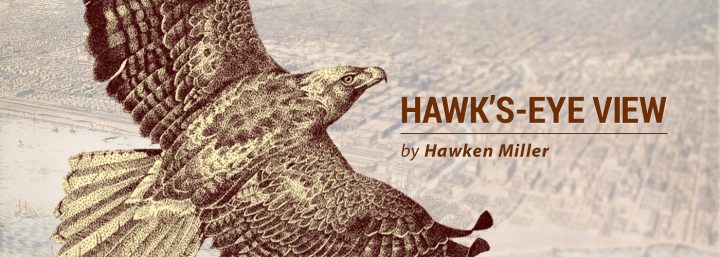Traveling the World Is Possible, Even with Duchenne

In a past column, I wrote about focusing on the things I can do rather than those I can’t. One of the things I can do is travel, and I’m fortunate to have visited many places around the world. Traveling is possible even with Duchenne muscular dystrophy. Proper communication and planning make visiting all your dream destinations possible.
I am grateful my parents brought me along with them on their trips when I was young. I’ve experienced vastly different cultures, customs, and environments. We went to Russia when I was 6 and China when I was 8. Most elementary school kids don’t have those experiences. My parents and I figured out how to travel early on, so it has become much easier.
As I write this column, I am on a plane. I’m flying to Seattle to spend a day in Vancouver and one in Portland with friends to celebrate graduation. The communication skills I’ve learned since those early trips abroad have made it possible for me to go on trips like this one. Asking for help is vital to having a safe and rewarding trip, especially when I don’t have my parents with me.
At a journalism conference in Austin, Texas, I had to ask the person I was rooming with — whom I had just met — for help with a variety of needs. I asked him to help me up from the toilet, pack my scooter into the Uber, and stretch me at night. Planning and preparation are important. I don’t burden someone with those needs in the moment; they know beforehand. I know it is awkward to ask, but it’s the only way my parents trust me to go on these trips without them.
For some situations, it’s best if you know one of the people you are going with. My parents were not amused when I signed up to visit Tijuana, Mexico, for my virtual reality reporting trip. To their credit, there were a few things that could have gone wrong: I could have gotten sick or kidnapped, and I might have been unable to negotiate the sidewalks or roads with my scooter.
I convinced them to let me go by suggesting I bring a friend who had experience reporting in conflict zones. Thankfully, he didn’t have to fight anyone off, but he did have to carry me and my scooter up some stairs. The Tijuana trip was an eye-opening experience that forced me out of my Southern California bubble. My parents were glad to hear that I never felt unsafe during the trip.
Traveling requires my parents and me to make certain circumstances work with my condition. I’ve mentioned my eighth-grade trip to Yosemite before. My dad created a backpack to carry me in during hikes.
In high school, I went on school trips to Argentina and Vietnam. We made sure that my dad could go on both trips. I needed his strength, especially when he carried me down a few flights of stairs carved into the rock near Iguazú Falls. In Vietnam, I was on his shoulders through a deep cave system in Ha Long Bay. Communication was important on both trips. In broken Spanish, I firmly told the two Argentine airport attendants who were taking my scooter apart, “Si rompen mi scooter, me lo tendrán que pagar.” “If you break my scooter, you’re paying for it.”
You don’t have to go far to travel, either. I went on a road trip to Colorado after my freshman year of college. During spring break of my freshman year, I drove down to San Diego. If you are unable to drive, there might be services available in your area to take you and your chair. In the Los Angeles area, there is a service called Access that serves as a complement to the Metro and bus services.
Air travel is still necessary to visit some places. The scooter I have is not as expensive as my chair, and we are more comfortable subjecting it to the wrath of baggage handlers. There are smaller, portable power chairs available, as well.
Stretching is extremely important wherever you go. Sitting in a plane or car for long periods of time tightens up your muscles, and you will need to stretch them out.
***
Note: Muscular Dystrophy News is strictly a news and information website about the disease. It does not provide medical advice, diagnosis or treatment. This content is not intended to be a substitute for professional medical advice, diagnosis, or treatment. Always seek the advice of your physician or another qualified health provider with any questions you may have regarding a medical condition. Never disregard professional medical advice or delay in seeking it because of something you have read on this website. The opinions expressed in this column are not those of Muscular Dystrophy News or its parent company, Bionews Services, and are intended to spark discussion about issues pertaining to muscular dystrophy.







Leave a comment
Fill in the required fields to post. Your email address will not be published.